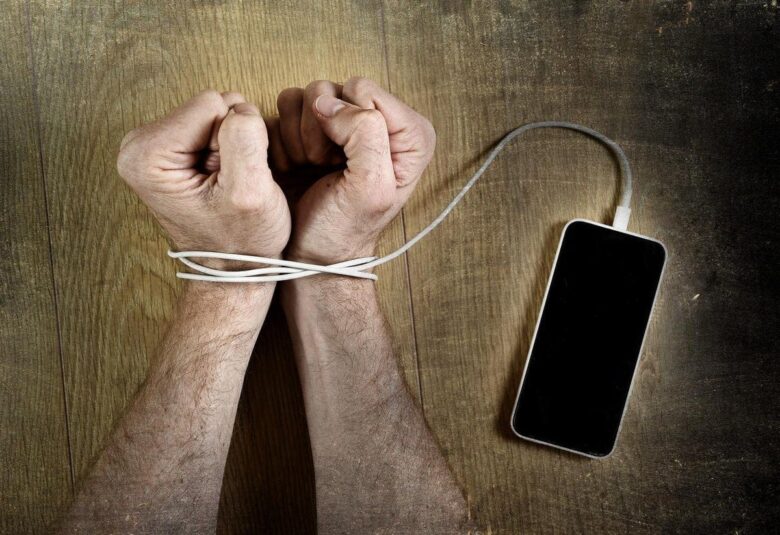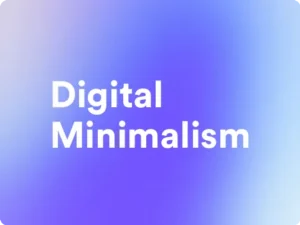In today’s connected world, the endless stream of digital content has completely transformed how we communicate, acquire knowledge, and spend our spare time. With just a single tap, we can immerse ourselves in a dizzying array of engaging content, breaking news, or entertaining short videos. The allure of staying informed and engaged is irresistible, but this constant involvement comes at the expense of our mental health, relationships, productivity, and attention span. Adults spend more than seven hours a day on screens, a significant portion of which is on social media sites. The urge to stay connected, respond instantly, and never miss a trend can be emotionally draining and alter our worldview. To reclaim our time and health, we must consciously find a balance between our digital and physical lives.
Why People Are Addicted to Social Media
App designers have created a dopamine-driven feedback loop that drives much of our online behavior. Every like, comment, and share provides a thrill that keeps you scrolling. Instagram, TikTok, and Facebook all use infinite scrolling and customized algorithms to keep people engaged for as long as possible. This game-like structure makes it difficult to stop. This constant stimulation can change how our brains function over time, making us crave instant gratification, shortening our attention spans, and even making us become anxious about comparing ourselves to others. Research has linked excessive social media use to sadness, loneliness, and sleep problems, especially in teens and young adults. The first step toward a better connection with technology is to recognize this trend.
Digital Minimalism: Live More, Scroll Less
Digital minimalism is the answer to the stress of technology. It aims to reduce technology use to improve focus and well-being. This strategy doesn’t mean you should stop using social media altogether; it simply means using it purposefully and setting boundaries. First, examine how you currently use it. Which apps take up the most time? Which platforms are truly useful? Consider unfollowing accounts that no longer inspire or inform you. Turn off unnecessary notifications that take up your time. Instead of just scrolling through your phone, do something positive, like posting a comment, creating something, or learning something new. Making time for social media and scheduling phone-free time (especially around meals, work, or before bed) can significantly improve your productivity and mental health. Keep your digital space clean, organized, and aligned with your goals, just as you would at home.
Set Realistic Boundaries to Avoid Negativity
To balance your digital life, you don’t have to become a digital recluse. Instead, set clear but flexible boundaries that help you think clearly. Communicate your boundaries to friends and family, such as no work meetings after 7 p.m. or no phone use during dinner. Use tools like Focus Mode, screen time reports, and app limits to gently remind yourself what you want to do. Instead of checking for updates every time you receive a notification, choose specific times of day to do so. It’s also important to view digital disconnection as self-care rather than an escape. We don’t always have the world at our fingertips. Protecting your time and energy isn’t selfish; it’s necessary. Managing your screen time doesn’t make you less connected; it makes your connections more meaningful and intense.
Reconnect with the Real World
When we spend more time online with people than in real life, relationships can become superficial and fractured. Eye contact, body language, and giving others your full attention all contribute to empathy, understanding, and emotional depth. Schedule weekly conversations or get-togethers with people you care about. Find and join local groups, clubs, or classes that align with your interests. Make it a habit to turn off your screens during family dinners, nature walks, or weekend trips. Reconnecting with others not only provides social support but also a sense of belonging and purpose. When digital life takes over your attention, the best solution is often to reconnect with the real world.
Mindful Technology Use
Mindfulness is a wonderful way to regain control over technology. Do you find yourself checking your phone due to boredom, stress, or simply out of habit? Instead of immediately stepping away, pause for a moment and think: “Is this what I really want to do right now?” Activate your senses and bring yourself back to the present moment. Develop digital habits that give you more clarity—check your phone consciously, not out of habit. Instead of comparing and distracting yourself, organize your feeds to grow and find joy. Engage in activities like writing in a notebook, meditating, or other creative hobbies to process your emotions without the internet. When you become aware of how and why you use digital tools, you transform from a passive consumer to a powerful digital participant.
Digital Detox Retreat
Occasionally a complete reset is needed. Consider taking a break from screens, social media, and email, perhaps for a weekend or a few days. Detoxing gives you time to recharge, reflect, and get back on track, whether you’re walking in nature, traveling, or simply spending time with loved ones. Many professionals and artists swear by these kinds of retreats for renewed focus and creativity. Don’t wait until you’re exhausted. Schedule regular screen-free time and treat it as sacred. You’ll find clarity, peace, and creativity in unexpected ways. After the detox, you’ll use devices more consciously and with greater motivation.
Conclusion
Paying more attention, both online and offline, is essential for balancing your digital life and social media. We live in a digital age, and technology can be incredibly powerful if you know how to use it and set boundaries. The goal isn’t perfection, but being present in the moment. You can reclaim your time by focusing on people, clearing your mind, and browsing with purpose. With self-discipline, purpose, and self-awareness, you can stop browsing and live your life to the fullest. Don’t let your online life take over your real life. It’s time to reclaim technology and take control of your happiness, focus, and attention.
FAQs
1. How much time should I spend on social media each day?
Experts recommend limiting your screen time to two hours per day. Built-in timers in apps can help you track and monitor your usage.
2. How do I know when to disconnect from technology?
If you’re constantly worried and preoccupied, comparing yourself to others online, having trouble sleeping, or spending less time interacting with people in real life, you might need a detox.
3. Can digital simplification help me get more done?
Of course. By removing unnecessary screens and limiting the time you spend on them, you can focus better, task-switch less, and better determine which tasks are most important.
4. How can I disconnect without losing focus?
Set aside specific times to check your social media. Focus on quality over quantity and only show useful and dynamic content.
5. Which apps can help you lead a healthy online life?
Yes, apps like Forest, Freedom, and Moment, as well as built-in phone features like Screen Time or Digital Wellbeing, can help you track and monitor your phone usage.




